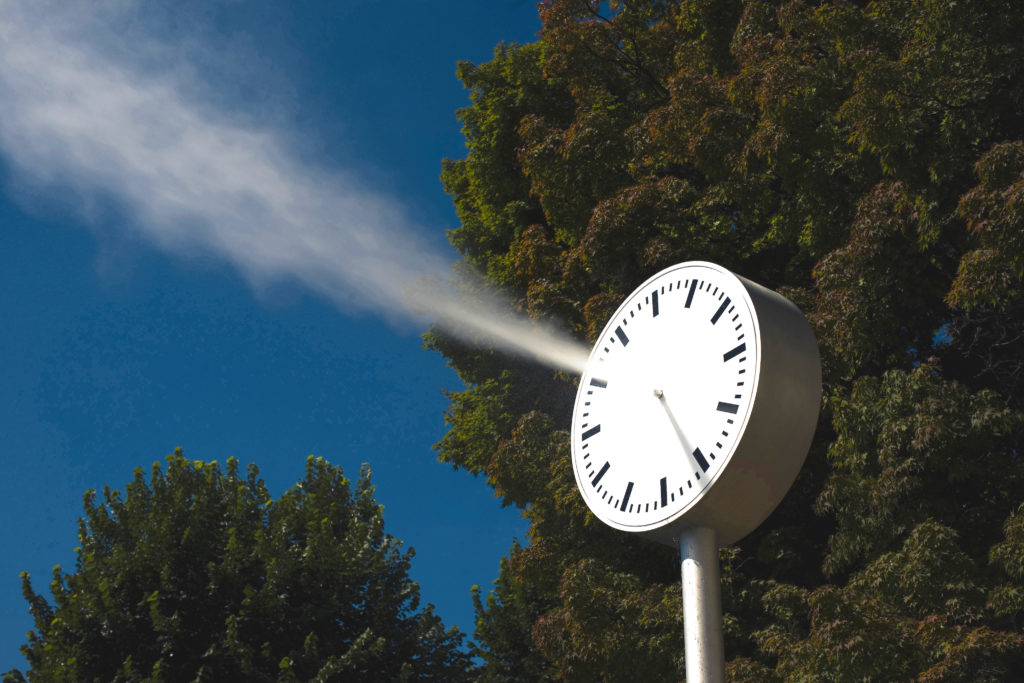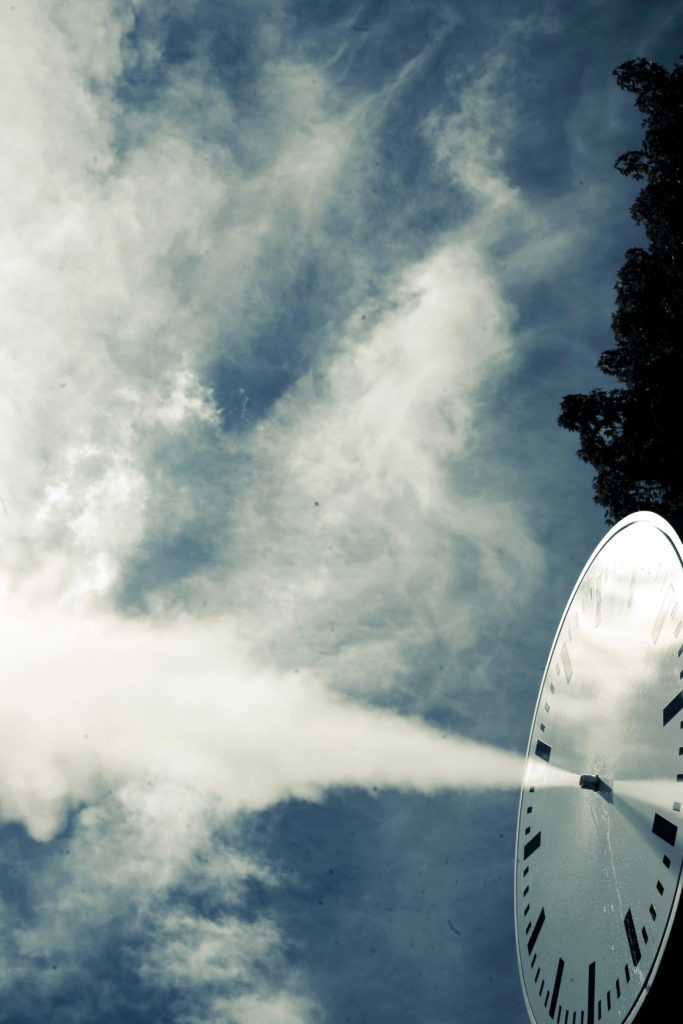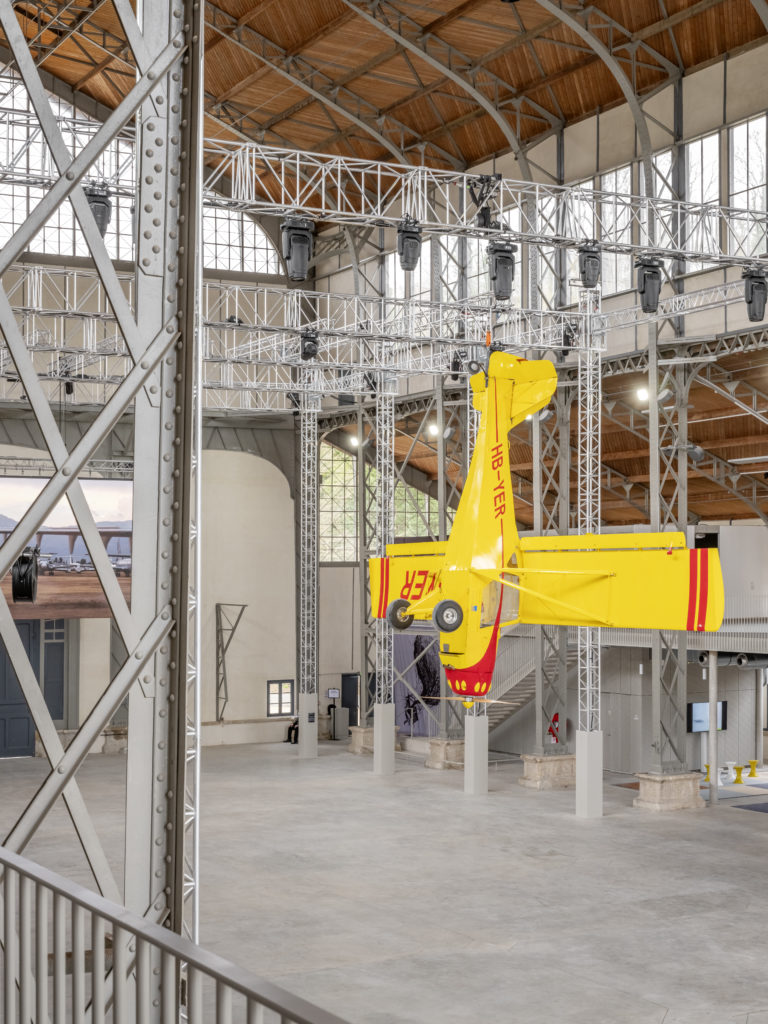
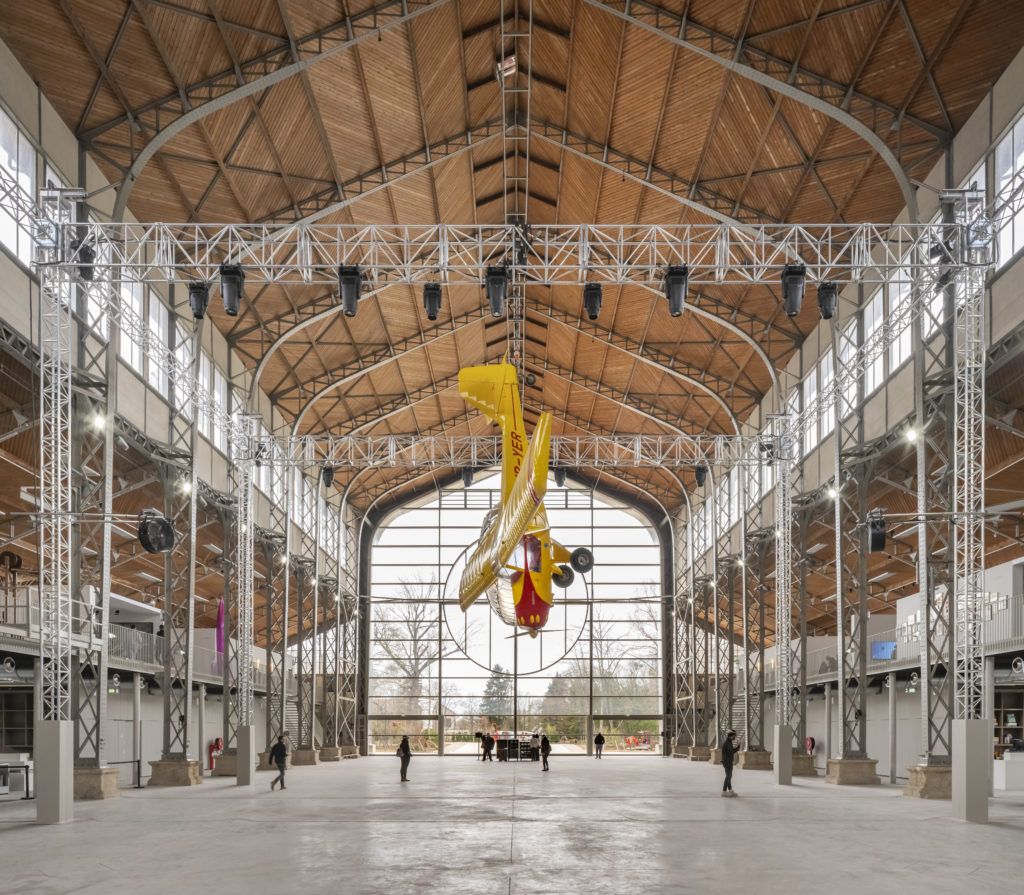
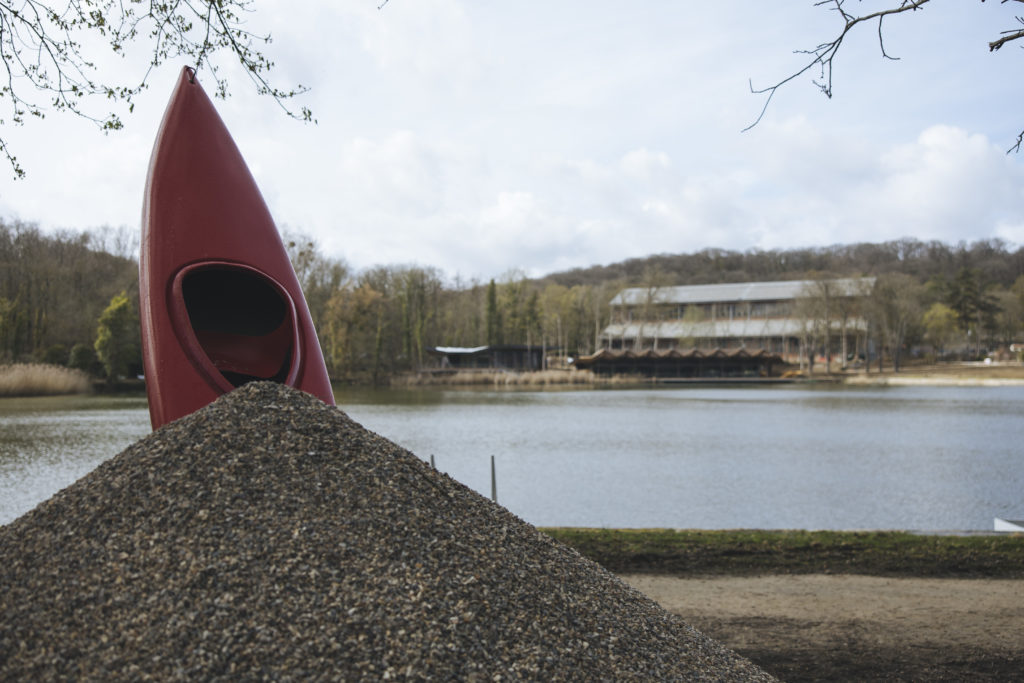
Roman Signer, Kitfox Experimental, 2014. Avion, ventilateurs, câble / Plane, fans, cables. Installation view at Hangar Y, 2023. Courtesy the Artist and Art : Concept, Paris.
The inaugural exhibition is organized by Art Explora, invited by the Hangar Y as part of its sponsorship program. It pays tribute to the primary function of the place by choosing flying machines as its theme. Starting from the universal fascination of the human being for flight and the numerous inventions allowing to reach this objective, the curator of the exhibition Marie-Laure Bernadac, in collaboration with Blanche de Lestrange, focused on the way these means of elevation and transport in the air and their transformations over time have inspired artists.
